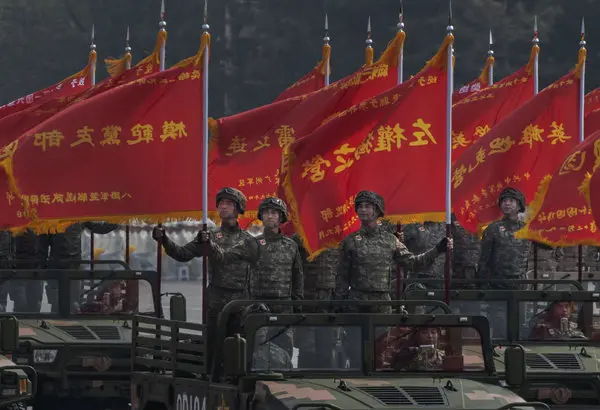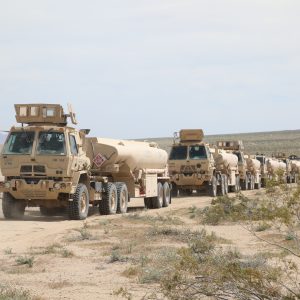At the China new generation weapons parade, Beijing unveiled platforms spanning small arms, armor, hypersonics, air defense and nuclear delivery—signaling a fully networked, multi-domain PLA entering service now.
Key Facts
- Nuclear triad presented together: DF-61 and DF-31BJ ICBMs, JL-3 SLBM, and JL-1 air-launched missile.
- Record-range DF-5C liquid ICBM displayed; China claims global reach and MIRV options.
- Hypersonic portfolio broadened: YJ-15/17/19/20 anti-ship missiles; DF-17, DF-26D and ship-/air-launched YJ-21.
- CJ-1000 long-range hypersonic cruise missile shown as a powered, maneuverable alternative to boost-glide systems.
- Directed-energy and counter‑drone triad: LY‑1 shipborne laser, high‑power microwave, and missile‑gun hybrids.
Why this parade matters
China concentrated a decade of modernization into one broadcast moment. The China new generation weapons parade ties five threads together: survivable nuclear deterrence; theater‑wide hypersonic strike; resilient, layered air defense; massed unmanned systems across air/sea/land; and digitized armor and fires. For regional planners, the signal is doctrinal: denial at distance, saturation at scale, and decision speed driven by sensors, autonomy and networking.

Strategic deterrence: a visible triad
Beijing’s first public triad presentation included new DF‑61 and DF‑31BJ road‑mobile ICBMs, the next‑generation JL‑3 SLBM, and an air‑launched ballistic missile carried by H‑6N bombers. The message is credibility and flexibility: land‑based mobility, submarine survivability, and an air leg that complicates adversary calculations. Within the same formation, the liquid‑fueled DF‑5C appeared with claims of >20,000 km range, MIRVs, and refined guidance—expanding global reach while reinforcing second‑strike assurance.
Hypersonic strike at scale
Three distinct technological paths emerged. First, boost‑glide “waveriders” like YJ‑17 and DF‑17 promise cross‑range maneuver to stress defenses. Second, scramjet‑powered cruise options—YJ‑19 and the long‑range CJ‑1000—offer sustained, powered hypersonic flight and flexible routing. Third, ballistic‑diving anti‑ship profiles—YJ‑20 and the new DF‑26D “Guam Killer”—deliver near‑vertical, high‑energy terminal attacks against carriers and fixed sites. The China new generation weapons parade therefore showcased depth, not just speed: multiple architectures designed to outlast single‑point countermeasures.
Layered air and missile defense
On land, the HQ‑11, HQ‑20, HQ‑22A, HQ‑9C, HQ‑19 and HQ‑29 outline a low‑to‑exo‑atmospheric shield. Short‑ to mid‑tier systems blend vertical‑launch interceptors with guns for dense point defense against drones and cruise missiles. Higher tiers add hit‑to‑kill options and midcourse intercepts, nudging China toward US/Russian‑class IAMD. At sea, the LY‑1 shipborne laser enters as a magazine‑depth extender—speed‑of‑light engagements against small UAS and terminal threats, complementing HHQ‑series missiles and CIWS.
Manned–unmanned teaming goes operational
Aerial highlights centered on the GJ‑11 stealth UCAV and “air‑superiority” UAVs designed for autonomy and maneuver, paired with the J‑20 family. The two‑seat J‑20S adds a mission commander to manage loyal wingmen while the front pilot prosecutes air combat; the J‑20A’s aerodynamic and propulsion refinements suggest greater supercruise and sensor fusion. At sea, a new shipborne unmanned helicopter extends ASW, ISR and strike from small decks. Underwater, UUVs and intelligent mines hint at persistent, low‑cost blockade and ASW concepts of operation.
Armor and long‑range fires, digitized
On the ground, China fielded the Type 99B upgrade and a potential fourth‑generation Type 100 main battle tank with advanced active protection, electro‑optical sensing and a rumored 130 mm gun. The companion Type 100 IFV integrates organic drone launch for over‑the‑ridge reconnaissance and strike, with crews using AR goggles for 360° awareness. Long‑range fires were anchored by the PHL‑16 (PCL‑191) modular rocket system—swappable pods for guided 300/370 mm rockets or short‑range ballistic missiles—pushing precision effects to 350–500 km.
How this shifts the balance
For Indo‑Pacific planners, the China new generation weapons parade crystallizes capability clusters that were previously inferred from test shots and trade‑show reveals. A triad on display lowers ambiguity. Hypersonic diversity complicates single‑layer defenses. Directed energy and microwaves reduce the cost curve against swarming threats. And manned–unmanned teaming suggests a near‑term air war construct where pilots orchestrate, rather than execute, every shot.
From a NATO vantage point, the most salient implications are doctrinal and industrial. The PLA is iterating fast in propulsion, seekers, and C2 middleware—areas where Western democracies face procurement friction. The imperative is twofold: accelerate layered sensor‑shooter integration and harden bases, ships and logistics against massed, maneuvering threats.
“The PLA’s modernization is not additive—it is combinatorial. Hypersonics matter because networks are maturing; lasers matter because swarms are cheap; triad credibility matters because ambiguity is shrinking.”
What to watch next
Expect more sea‑trials of directed‑energy mounts, wider deployment of PHL‑16 brigades, and iterative J‑20 engine blocks. On the naval side, pairing J‑35 carrier fighters with the KJ‑600 AEW aircraft will close the early‑warning gap for catapult carriers. Undersea, look for larger‑displacement UUVs and rocket‑assisted torpedoes to mature into routine fleet assets. Each thread reinforces the others.
For a platform‑level deep‑dive on shipborne unmanned helicopters introduced at the same parade, see our analysis here [1]. For broader context on hypersonic trends and allied counter‑measures, consult this primer from Breaking Defense [2].
Read Full Report here.
Further Reading
- DF‑5C nuclear ICBM: range, guidance and MIRV options
- China’s swarm‑capable USVs and maritime autonomy
- China’s nuclear triad on parade: what’s new
References
- Defence Agenda — China’s shipborne unmanned helicopters (internal). https://defenceagenda.com/china-shipborne-unmanned-helicopters/
- Breaking Defense — Hypersonic weapons coverage. https://breakingdefense.com/







